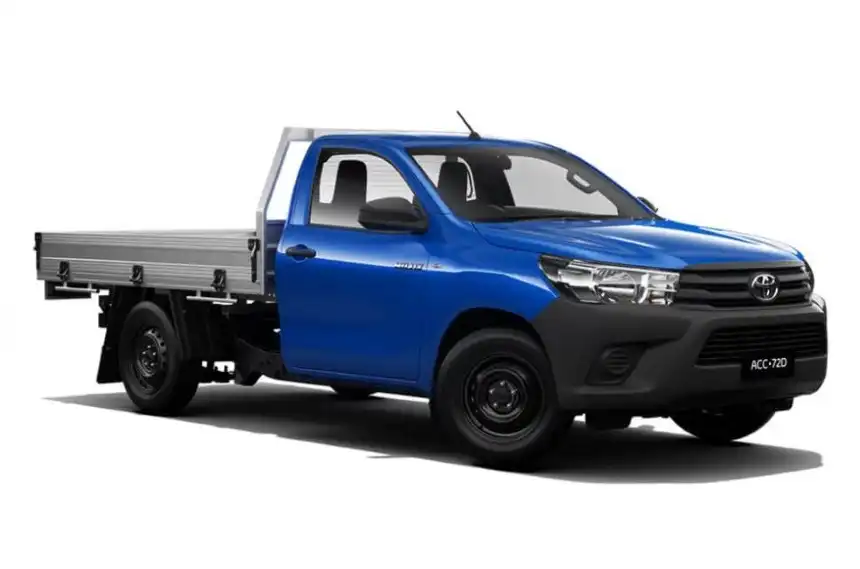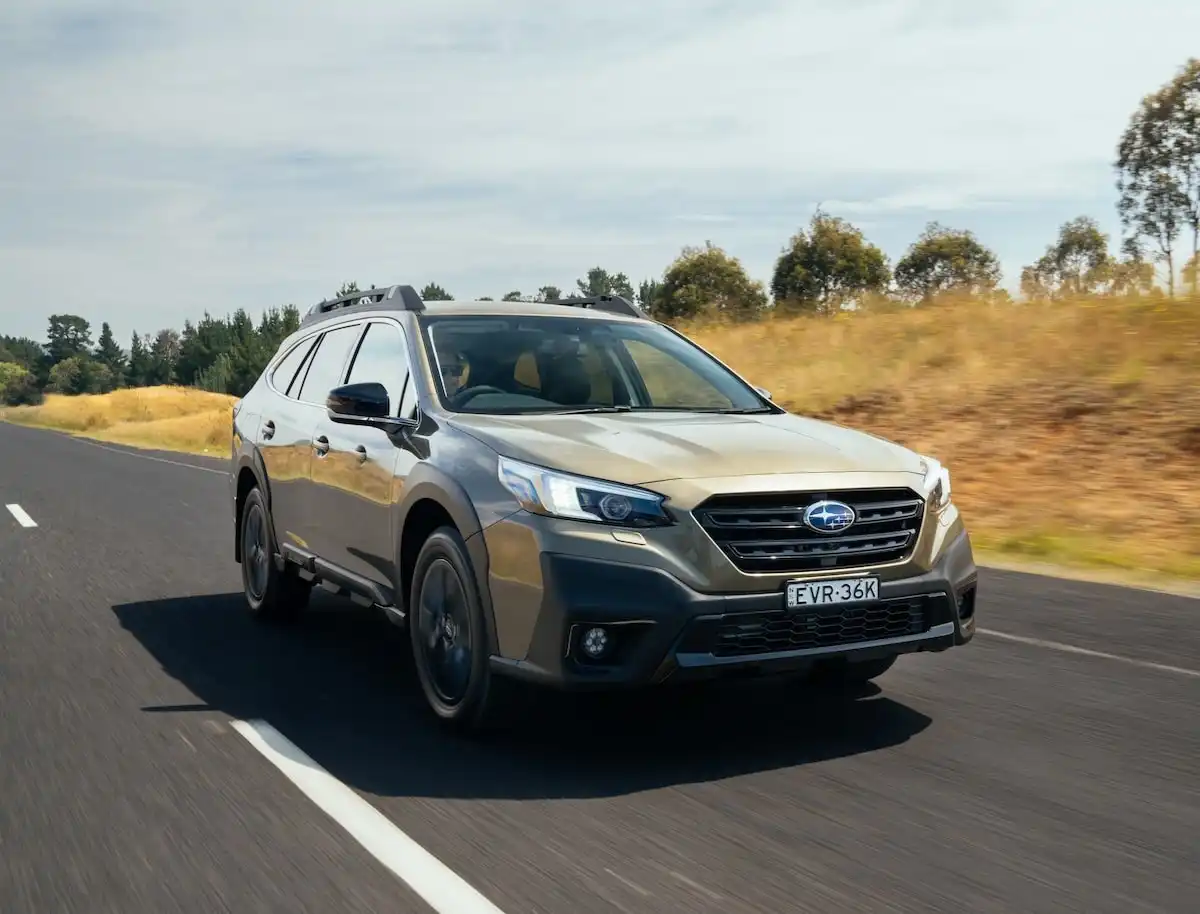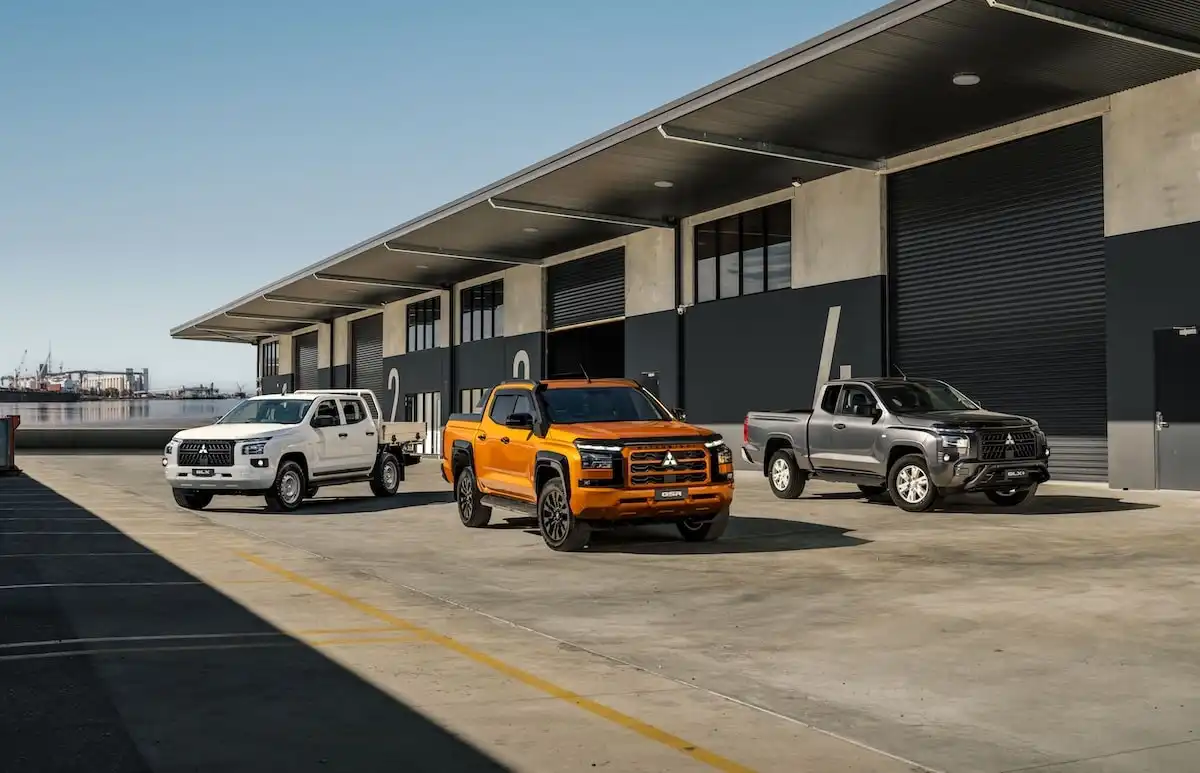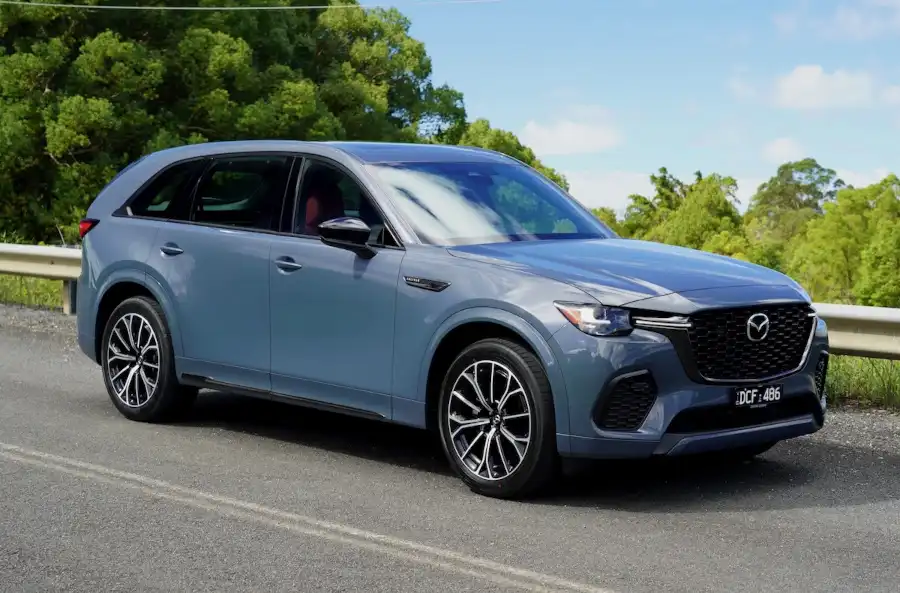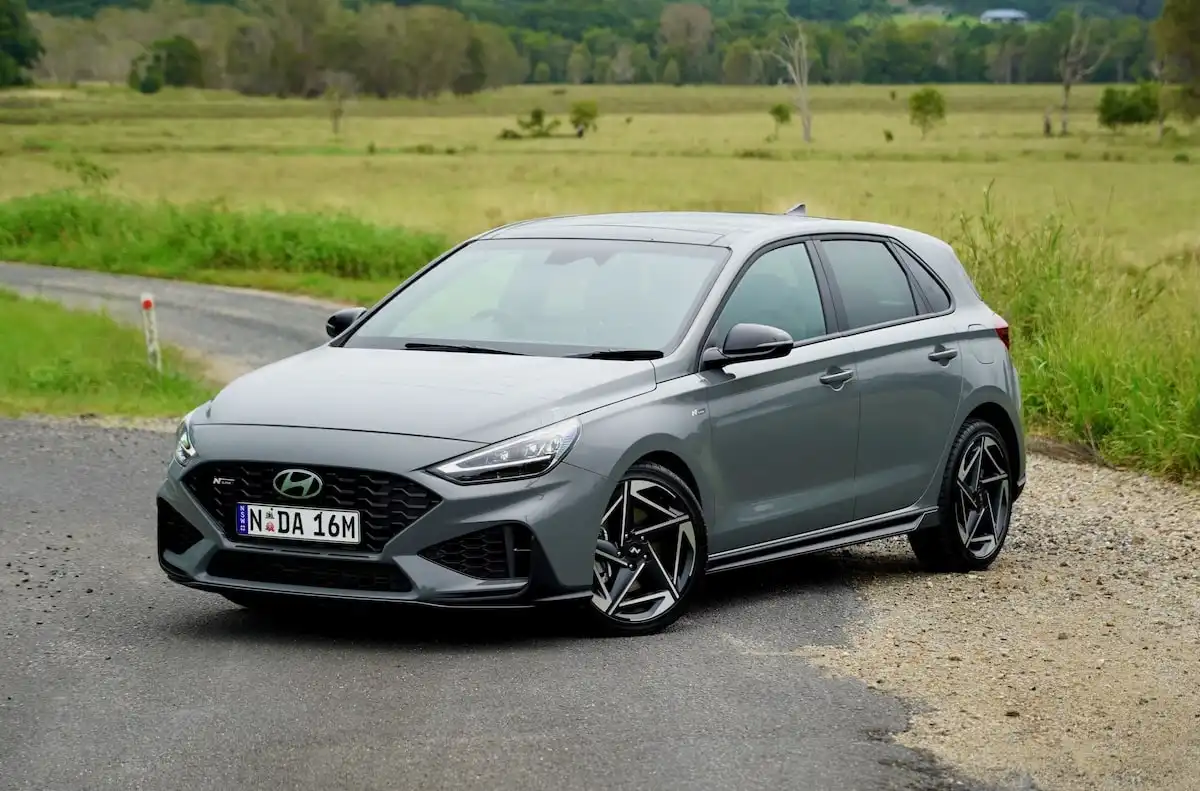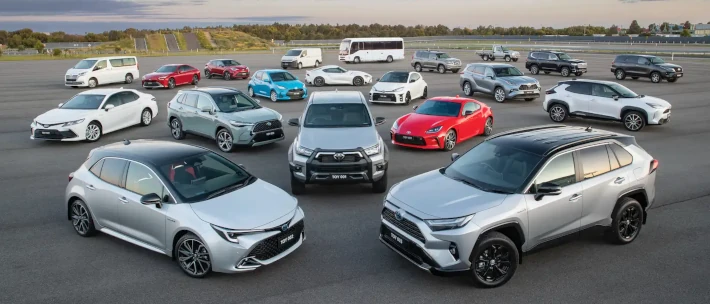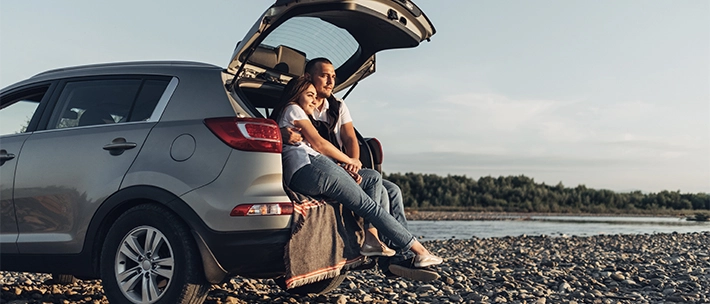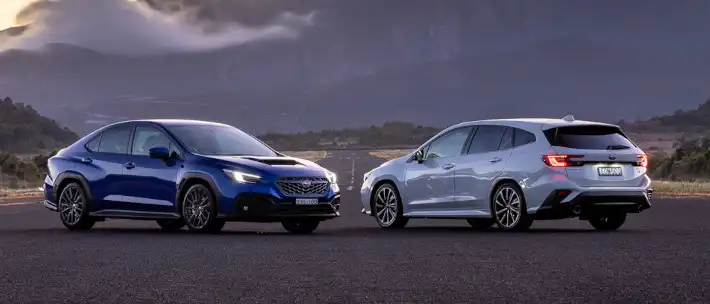The problem for the HiLux, though, is that as one of the segment’s kings, there is a heap of competition hot on the HiLux’s tail trying to win over Australian buyers and snatch the throne. With competitors like the Ford Ranger, Nissan Navara, Mitsubishi Triton, Isuzu D-MAX and the VW Amarok, the latest generation HiLux must perform to an exceptionally high standard to maintain its top spot.
So, just how good is the latest Toyota HiLux? Let’s talk about it.
Starting Price: $24,255
OnlineAuto Savings: Enquire now
Toyota Hilux (WORKMATE HI-RIDER) Specifications
| Model Date | 2022 |
| Make | TOYOTA |
| Model | HILUX |
| Series | GUN135R FACELIFT |
| Variant | WORKMATE HI-RIDER |
| Body | C/CHAS |
| Fuel type | DIESEL |
| Transmission | 6 SP MANUAL |
| Drive | 4x2 |
| Engine | DTFI |
| Engine capacity | 2393 |
| Engine configuration | DUAL OVERHEAD CAM / 16 valves |
| Engine RPM | 3400 / 1400 |
| Cylinders | DT4 |
| Torque | 343 |
| KW | 110 |
| Fuel tank size | 80.0 |
| Fuel usage specs | 7.7 / 0.0 |
| CO2 | 203 |
| ANCAP security rating | 5 |
For more details and other variants, check Toyota Hilux car page.
Need help narrowing down your choices?
Get in touch with one of our Car Buying Specialists today
Request a quoteHow Much Does It Cost?
The Toyota HiLux range kicks off from $24,255 for the 4x2 Single Cab Chassis Workmate manual, while the automatic is priced at $26,225, and the Workmate Hi-Rider 2.4-litre diesel is priced at $29,465.
Moving to the 4x2 Dual-Cab brings the price to $33,705 for the Workmate manual, while the automatic is priced at $35,705. Moving to the Workmate Hi-Rider is priced at $40,795 for the manual and $42,795 for the automatic. Moving to the SR Hi-Rider comes at a cost of $43,865, while the SR5 Hi-Rider is priced at $54,450.
If you’re looking for a 4x4 Single Cab Chassis, the Workmate manual is priced at $40,155, while the SR 2.5TD manual and automatic are priced at $43,255 and $45,255 respectively.
Moving to the 4x4 Dual Cab Cab Chassis range comes at a price of $47,925 for the Workmate automatic, while the SR 2.8TD manual and automatic are priced at $49,145 and $51,295 respectively.
Finally, the HiLux 4x4 Dual Cab Pickup range kicks off from $47,425 for the Workmate 2.4TD manual, with prices rising to $50,645 for the SR 2.8TD manual, $58,680 for the SR5 manual, $61,680 for the SR5+ manual, and topping-out in the form of the $70,750 HiLux Rugged X.
How Much Can OnlineAuto Save You?
Using OnlineAuto’s car buying service in Australia, you could save by using one of our car experts to help you find the best new car for you.
What Features Does the Toyota HiLux Have?
Toyota’s entry-level HiLux Workmate range comes riding on a set of 16-inch wheels, or 17-inch alloys for 4x4 and Dual-cab variants, and receives a set of automatic halogen headlights with daytime running lamps, a reversing camera, adaptive cruise control, power windows, cloth interior, air conditioning and an 8.0-inch infotainment system with Apple CarPlay and Android Auto, as well as a heap of safety equipment that we’ll cover later in this review.
Moving to the HiLux SR range adds a set of 17-inch alloys, as well as a set of side steps around the body, an upgraded sound system and an air conditioned cooler box in the front of the cabin.
The HiLux SR5 comes riding on 18-inch alloys, and receives LED headlights and fog lights, chrome door handles, keyless entry & start, a leather-wrapped steering wheel and gear lever, dual-zone air conditioning, satellite navigation and DAB+ upgrades for the infotainment system, front and rear-mounted parking sensors and privacy glass.
The HiLux Rogue variant receives black exterior highlights with a set of Rogue decals, as well as a sports bar, surround-view camera and upgraded JBL sound system.
Finally, Toyota’s range-topping HiLux Rugged X receives an upgraded suspension system with revised front springs and rock rails, as well as a snorkel, LED light bar, bash plate, bull bar, front and rear recovery mounts and a black sports bar featuring tie-down points.
Range Features:
-
16-inch wheels (17-inch for dual-cab and entry-level 4x4 variants)
-
Adaptive cruise control
-
Rear view camera
-
Air conditioning
-
Reversing camera
-
Automatic halogen headlights
-
8.0-inch infotainment system with Apple CarPlay and Android Auto
-
17-inch wheels (SR)
-
First row air conditioned cooler box (SR)
-
Side steps (SR)
-
18-inch alloys (SR5)
-
LED headlights and fog lights (SR5)
-
Leather-wrapped steering wheel and gear lever (SR5)
-
Satellite navigation and DAB+ upgrade for infotainment system (SR5)
-
Chrome exterior highlights (SR5)
-
Surround-view camera (Rogue)
-
Sports bar (Rogue)
-
Black exterior highlights with Rogue decals (Rogue)
-
LED light bar (Rugged X)
-
Revised front suspension springs (Rugged X)
-
Bull bar (Rugged X)
-
Bash plate, sports bar and recovery points (Rugged X)
Toyota HiLux Colours
The Toyota HiLux range is available in a choice of colours, including Crystal Pearl White, Glacier White, Silver Sky, Graphite, Eclipse Black, Saturn Blue, Nebula Blue, Feverish Red and Oxidize Bronze.
Is it Comfortable to Drive?
While the HiLux has been designed primarily as a tool for worksites, heavy loads of cargo and towing duties, it remains a smooth, utilitarian tool that is absolutely comfortable to drive on school runs and holiday road trips.
The ride quality isn’t the most sophisticated on the market, but this is largely down to the HiLux’s platform that is designed to lug around large, heavy loads of cargo on the worksite, or even push off-road to an impressive degree- two areas that the HiLux no doubt excels.
Something to keep in mind here is that power for the entry-level lineup comes from a fairly basic 2.7-litre petrol engine producing 122kW/245Nm, which is completely outpaced in terms of power and fuel economy by the 2.4-litre turbo-diesel unit (producing 110kW/400Nm) and the peach of the engine lineup, Toyota’s 2.8-litre turbo-diesel producing 150kW/500Nm.
We’d advise sticking to one of the two turbo-diesel engines, which offer superior torque figures that translate to added work and towing abilities, and remain the smoothest powertrain to drive every day.
All up, the HiLux range offers a driving dynamic that perfectly matches its build construction - it feels absolutely bulletproof, regardless of cargo loads and road surfaces and feels like nothing can stop it.
Is it Practical and Spacious?
Depending on which variant you opt for, the space and practicality on offer in the Hilux family ranges from modest to superb for the type of vehicle this is. In its most basic form, the Hilux offers a simple, utilitarian approach to its interior design, with straight-forward packaging brought into the 21st century with that 8-inch display.
In more expensive variants, the quality of the interior increases and there’s leather upholstery options for those looking to upgrade the traditional fabric seats.
Practical elements include a huge storage area inside the expanding two-piece glove box, as well as under the large centre arm rest, some storage trays in the centre console and large door bins either side.
In a dual-cab configuration, the HiLux can accommodate an extra pair of legs in the rear cabin, which is acceptable for adults on short journeys, but is no doubt more suited to transporting young kids. On that note, there’s a set of ISOFIX anchors in the rear of the cabin for those looking to install a child seat.
Overall, there’s little to get excited about, but that’s the point - Toyota designed this car to help Australians get their jobs done quickly, and not necessarily in style, but it has become more sophisticated in recent years, which we can appreciate.
Is the Toyota HiLux a Workhorse?
The HiLux range is designed to be put to work, and in this sense, it remains in its comfort zone even when pushed to the extremes, and Toyota’s build quality means it can soak up all the hard work you can throw at it.
Buyers can opt for a specific body shape for their preferences, with a range of single cab and double cab chassis, pick up and extra cab bodies available for the HiLux range, all of which offer a wheelbase of 3,085mm and ground clearance of 216mm.
In terms of braked towing capacity, entry-level variants are capped at 2,500kg, while the step-up diesel models can tow 2,800kg, and the 4x4 range can tow 3,500kg. Gross vehicle mass figures range from 2,700kg to 3,100kg, while the certain HiLux variants have a maximum gross combination mass of 5650kg, making them perfect for towing large caravans or huge loads of cargo.
As you’d expect, then, the HiLux isn’t just a workhorse, it’s one of Australia’s leading workhorses for a huge number of reasons, all of which the latest generation continues to improve upon.
Is it Safe?
The Toyota HiLux range has been awarded ANCAP’s maximum five-star safety rating after scoring 96% for adult protection, 87% for child protection, 88% for road user protection and 78% for its safety technologies.
As standard, the HiLux range comes packaged with autonomous emergency braking that can detect cyclists and pedestrians at night and during the day, as well as adaptive cruise control and lane departure warnings and steering assistance.
Is it Fuel Efficient?
Fuel economy in the HiLux range depends if you’re opting for the petrol or one of Toyota’s two choices of diesel engines. The entry-level petrol engine is rated between 7.1-8.0L per 100km on a combined cycle, while the base turbo-diesel unit is rated at between 7.1-8.1L per 100km, making it slightly thirstier on fuel, while offering significantly more torque.
Toyota’s flagship powertrain, the 2.4-litre turbo-diesel is rated at between 7.4-8.0L per 100km on a combined cycle.
Our Verdict: Is the Toyota HiLux Worth it?
Over the years, the Toyota HiLux has earned itself a fierce reputation as one of the leading vehicles in Australia’s ever-competitive ute market, and we’re pleased to report that the latest HiLux not only upholds that reputation - it improves upon the recipe.
While the competition might be coming thick and fast, the HiLux remains the all-round king of the hill and the segment’s yardstick.
The Toyota HiLux is a fantastic option for those looking for a reliable and competent work companion that is comfortable in pretty much any situation you can throw at it. As a result, we can’t help but recommend you position the HiLux atop your ute shortlist, given its reliability, Toyota’s build quality and ownership program and astonishingly tough and adaptable platform.
On that note, if you’re in the market for a new car, you can get a free quote and see how much OnlineAuto can save you on your next car, or call us on 1300 719 925
Five Specs You Need to Know
-
Five-year unlimited KM warranty
-
Engine and transmission warranty can be extended to seven-years
-
Five-star ANCAP safety rating
-
Braked towing capacity ranges from 2,500-3,500kg
-
One petrol and two turbo-diesel engines available across range
Pros
-
Incredibly tough platform lends itself perfectly to work and off-road duties
-
Powerful diesel engines great for towing and large cargo loads
-
Still the all-round king of the hill
Cons
-
Short service intervals (six-month/10,000km)
-
Beefy steering at low speeds
-
Some variants are becoming increasingly pricey
Toyota HiLux Competition
Toyota Hilux |
VS |
Ford Ranger |
| Nissan Navara | ||
| Isuzu D-MAX | ||
| Volkswagen Amarok | ||
| Mitsubishi Triton |
